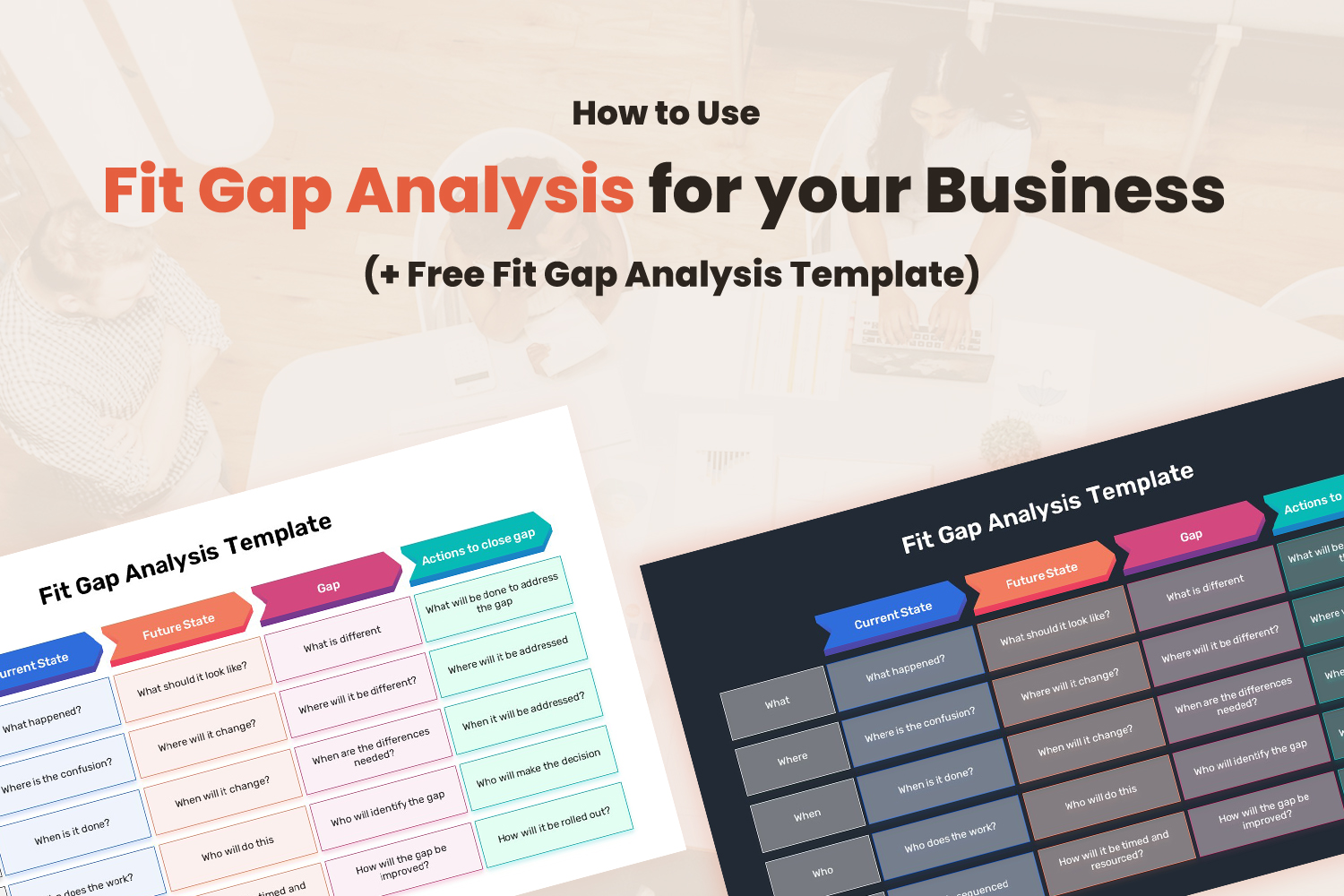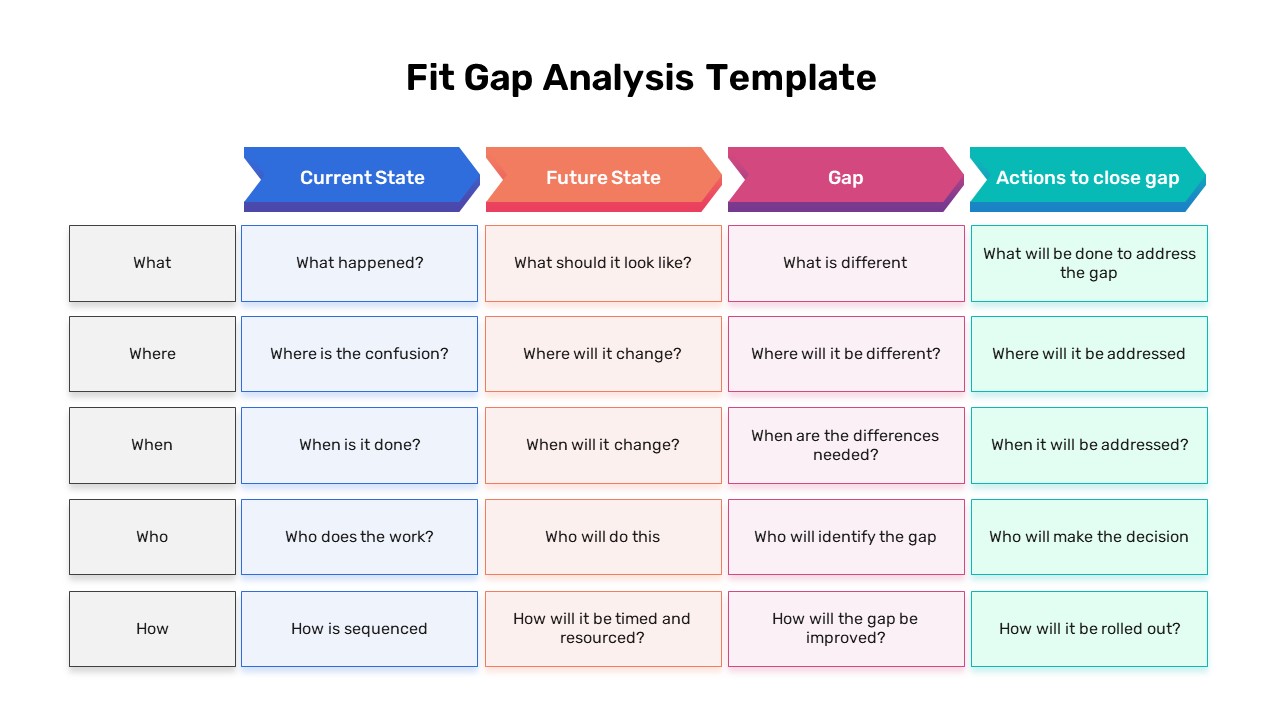How to Use Fit Gap Analysis for Your Business (+Free Fit Gap Analysis Template)

If you’re an entrepreneur, you would have researched “Why many businesses fail?”. According to a survey, 60% of new businesses fail in their initial three years, primarily because of no business plan, cash flow problems, etc.
Whether it’s unrealistic goals, unorganized plans, bad luck, or a half-baked business model, a business can go wrong in numerous ways.
Unidentified business gaps lock the business’s ability to grow and adjust to changing conditions, seize opportunities and remain competitive. So how to identify such functional gaps? Businesses can use fit-gap analysis to identify the lapses in the business & determine what needs to be done to bridge any existing gaps.
What is Fit Gap Analysis?
Unidentified gaps and shortcomings in every business prevent the business from running smoothly. In such cases adapting Fit Gap Analysis is quintessential, which nullifies all the gaps.

Fit Gap Analysis is a methodology that helps businesses identify the gaps between a company’s existing plans, processes, or system and the requirements of the new process or system. The result of perfect Fit gap analysis is to determine a plan that fits the business goal, identifies gaps, understands the company’s current state, and develops a roadmap on how to achieve business goals.
Fit-Gap Analysis Steps
Fit Gap Analysis is a simple process; you just need to ask yourself some simple questions: where do you exist, what do you wish to achieve & how are you going to achieve that? Although the Fit gap analysis is an easy process, but can really be challenging when you get into it.
It’s important to pay attention to minute details of the processes and identify the slightest problems in them, as neglecting them can give problems room to grow and cause even more damage.
Here we will show you steps you can follow to conduct a gap analysis:
- Go Through Current Process: The first step of Fit Gap analysis is to analyze your current state. And look through the organization’s day-to-day operations and point out the main processes. The purpose of doing so is because the main process has several small orbiting processes that deal with different personnel. Sometimes the reason for main function failure is the sub-processes not being handled in a better way.
- Measure the Current Outcome: The next step is to measure the outcome. Scale up what outcomes you get from the processes and then measure whether they align with your expectations. If the actual results don’t align with the expected ones, then you need to fix the problem.
- Identify the Desired Outcome: The purpose of doing fit gap analysis is to make a comparison between the “real” and the “ideal” outcomes. Once you have started the system, you will have the intended result for it to give. Now mark the difference in the performance provided to them.
- Identify Gap and Report It: Now you have identified system is lagging, now explore the problems, why the process isn’t working, and what the issues are with the working. There could be numerous reasons for administration, management, or negligence of the risks. Once you identify the root cause, report them. Reporting such issues will help in the future if a similar problem arises.
- Bridge the Gap: Bridging the gap is the most crucial step of fit gap analysis. Once you have identified the problems and the factors behind them, the next step is to take action to overcome them. You can introduce a new strategy, new management software, or a risk management team that can handle the operations that were going unnoticed before.
- Maintenance: Your job doesn’t end here once you have bridged the gaps. You constantly need to keep an eye on the causes of the gaps and work to provide more FIT processes for your organization.
Final Words
By performing fit-gap analysis, you find system errors that cause losses and ensure technology solutions align with business requirements. By referring to this guide, you can easily conduct fit gap analysis.









